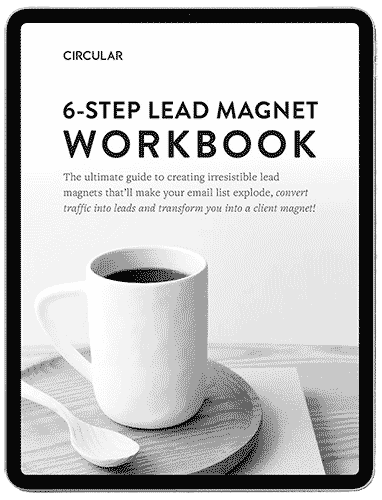Neurofeedback for Anxiety Murray UT
Ever feel like your brain is a browser with way too many tabs open? You try to focus on one thing, but a dozen anxious thoughts keep popping up, making it impossible to just be. What if you could gently guide your brain back to a state of calm, without medication?
In this article, we’re going to explore 5 incredible facts about neurofeedback, a cutting-edge approach to anxiety relief right here in Murray, UT. We’ll talk about how it works, what to expect, and why it might be the breakthrough you’ve been looking for.
I remember a client, a teacher from right here in Murray, who came to me completely overwhelmed. Her days were filled with the stress of managing a classroom, and her nights were sleepless with worry. She felt like she’d tried everything. After a few neurofeedback sessions, she told me it was like the “volume on her anxiety had been turned down.” She could finally breathe again.
1. It’s Like a Workout for Your Brain
Most people think of the brain as something you can’t change, but that’s not true. Your brain is incredibly adaptable, a concept that The National Institute of Health says is called neuroplasticity (1). Neurofeedback is like a workout for your brain. We use advanced technology to monitor your brainwaves in real-time and then provide feedback, usually in the form of a video game or a movie. When your brain produces calmer, more focused brainwaves, the movie plays smoothly. When it gets distracted or anxious, the movie fades. This gentle feedback encourages your brain to create new, healthier neural pathways. Over time, your brain learns to maintain a state of calm on its own, even when you’re facing the stress of a commute on I-15 or just the daily pressures of life in the Salt Lake City area. It’s not about forcing your brain to change, it’s about guiding it.
2. You Can Actually SEE Your Brain Activity in Real-Time
One of the coolest things about neurofeedback is that it’s not some mysterious process. You can actually see what’s happening in your brain. We place a few small sensors on your scalp, and these sensors read the electrical activity of your brain. That activity is then displayed on a screen. For many people, this is a huge “aha” moment. They can literally see the connection between their thoughts and their brain activity. It makes the whole process feel much more tangible and real. It’s one thing to be told you’re feeling anxious, it’s another to see how that anxiety is affecting your brain. This visual feedback helps to demystify the process and empowers you to take an active role in your own healing.

3. It’s Surprisingly Relaxing (and Drug-Free!)
The idea of having sensors on your head might sound a bit intimidating, but the reality is that neurofeedback sessions are usually very relaxing. You just sit back in a comfortable chair and watch a screen. There are no shocks or anything invasive. You’re simply teaching your brain to relax itself. For many people, this is a huge relief, especially if they’re worried about the side effects of medication. As the Mayo Clinic notes, many people are seeking non-pharmacological ways to manage their anxiety (2). Neurofeedback is a powerful, drug-free option that can provide lasting relief without the risk of dependency or unwanted side effects. It’s a way to work with your body’s natural ability to heal, not against it.
4. The Results Are Meant to Last
One of the biggest questions people have about any kind of therapy is whether the results will last. With neurofeedback, the goal is to create lasting change. Think of it like learning to ride a bike. At first, you might be a little wobbly and need some help. But once you get the hang of it, it’s a skill you have for life. Neurofeedback works in a similar way. You’re not just treating the symptoms of anxiety, you’re retraining your brain to function in a healthier way. The new neural pathways you create become your brain’s new normal. Studies published on platforms like ScienceDirect have shown the long-term effectiveness of neurofeedback for anxiety (3), which means you can experience sustained relief from things like racing thoughts, tension, and that constant feeling of being on edge.
5. It’s Not for Everyone (and That’s Okay)
As with any therapy, neurofeedback isn’t a one-size-fits-all solution. There are some situations where it might not be the best first choice. For example, individuals with certain severe mental health conditions might need other forms of treatment first. That’s why a consultation is so important. A qualified biofeedback therapist here in Murray can talk with you about your specific needs and help you decide if neurofeedback is the right path for you. It’s all about finding the right fit for your unique situation. As a resource from Wikipedia explains, different therapies have different applications and contraindications (4). Honesty and a personalized approach are key to finding what truly works.
Ready to Turn Down the Volume on Your Anxiety?
Feeling like your brain could use a reset? If you’re tired of anxiety running the show and you’re in the Murray, UT area, it might be time to see if neurofeedback is right for you. It’s a brave step to ask for help, and we’re here to make it as easy as possible. Reach out to us at Mind Body Pivot to schedule a consultation. Let’s talk about how we can help you find your calm.
Frequently Asked Questions
What is the most successful therapy for anxiety?
That really depends on the person. For some, Cognitive Behavioral Therapy (CBT) is very effective. For others, neurofeedback offers amazing results, especially for those looking for a drug-free option. The best way to know is to talk to a therapist about your specific situation.
Does neurofeedback work for anxiety?
Yes, for many people it does. It helps to calm the overactive parts of the brain that contribute to anxiety. The real-time feedback helps your brain learn how to regulate itself, leading to lasting relief from symptoms.
What is the 3-3-3 rule for anxiety?
It’s a simple grounding technique. Look around and name 3 things you see. Then, name 3 sounds you hear. Finally, move 3 parts of your body. It’s a quick way to bring yourself back to the present moment when you feel anxious.
Who should not do neurofeedback?
While it’s safe for most people, it might not be the best fit for individuals with certain complex medical conditions or during a crisis. A thorough assessment with a trained professional is the best way to determine if it’s right for you.

